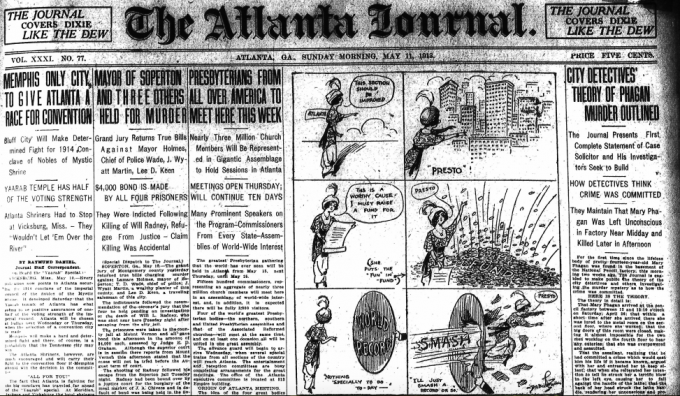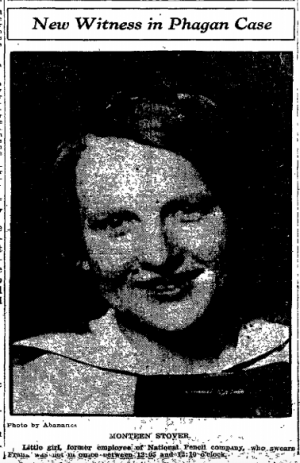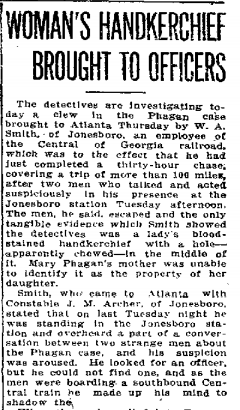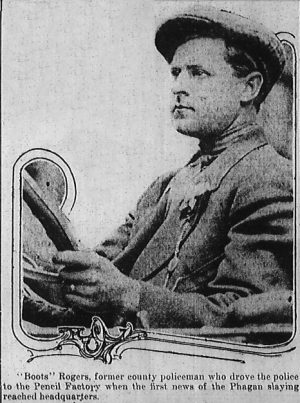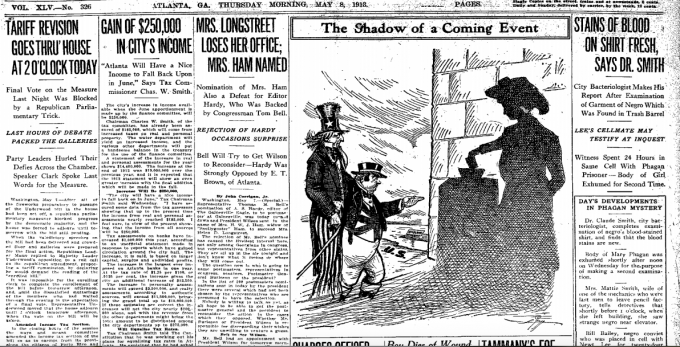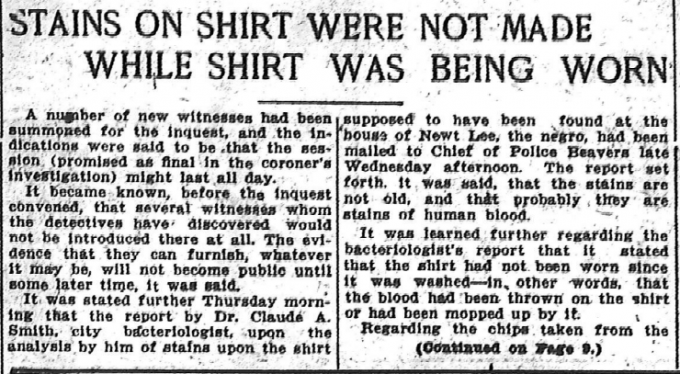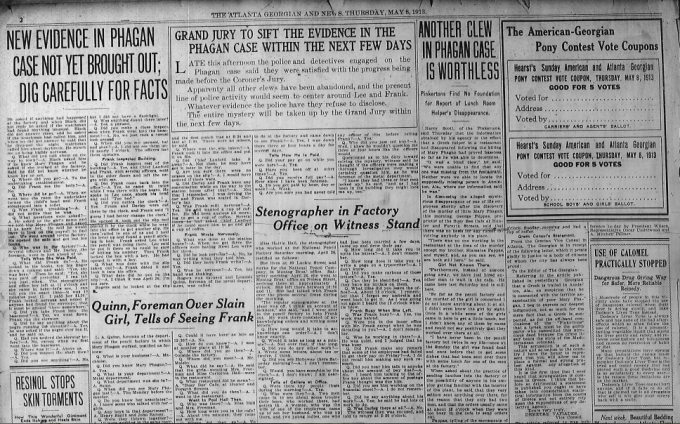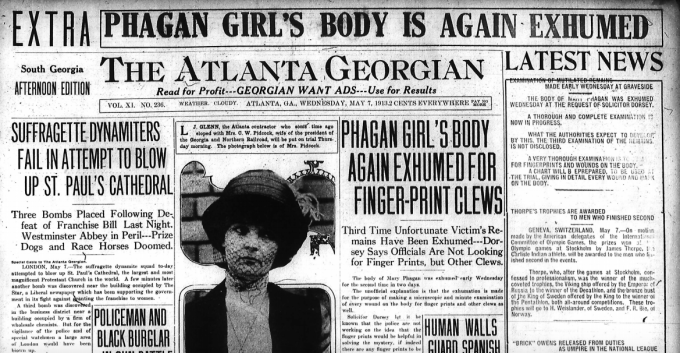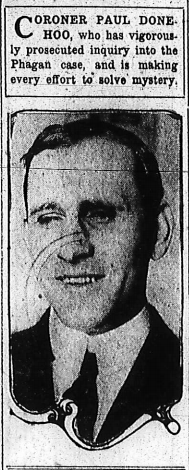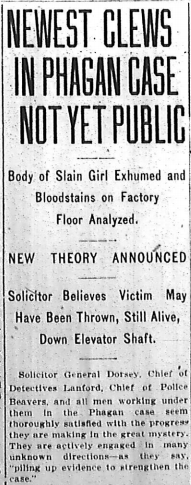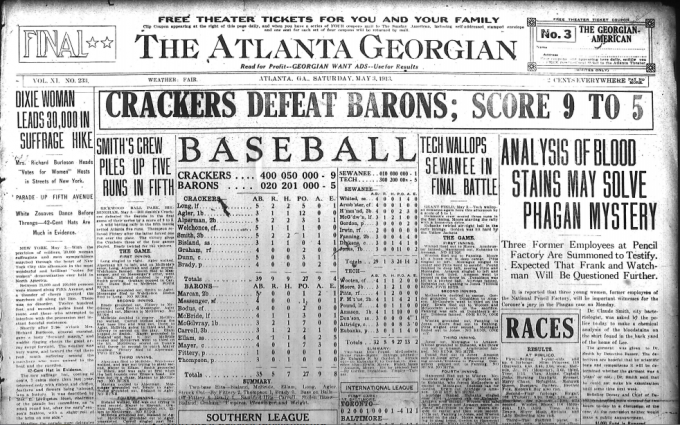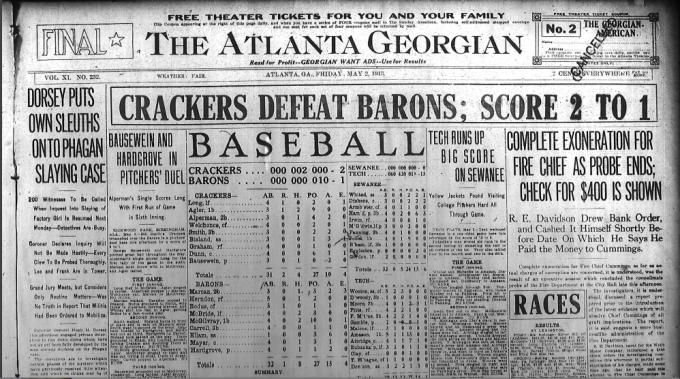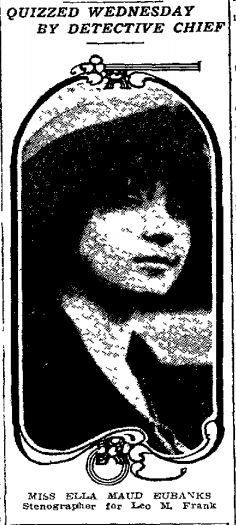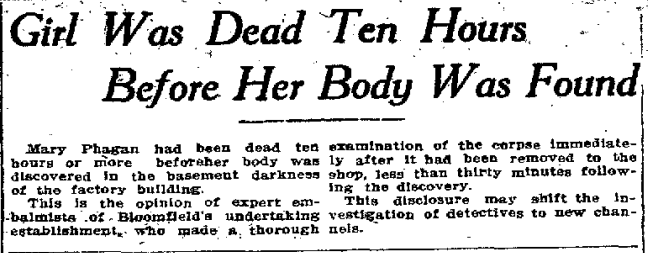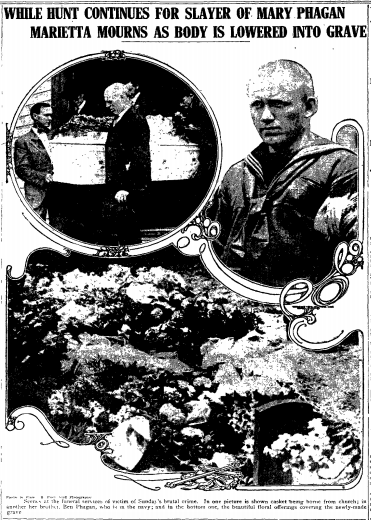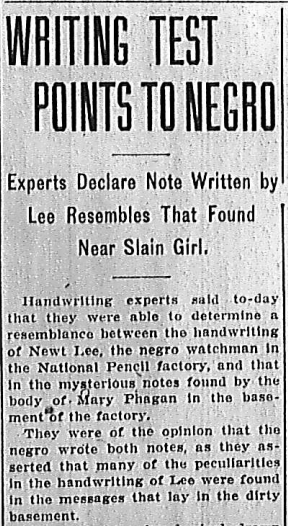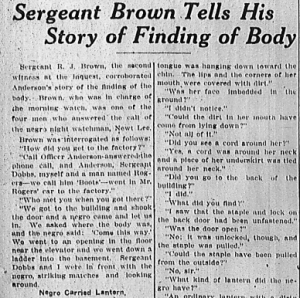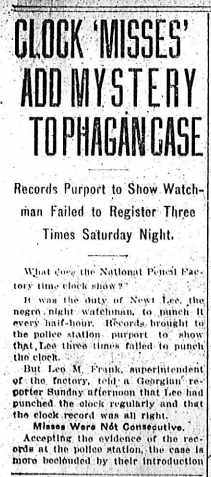Another in our series of new transcriptions of contemporary articles on the Leo Frank case.
Atlanta Journal
Sunday, May 11th, 1913
The Journal Presents First Complete Statement of Case Solicitor and His Investigators Seek to Build
HOW DETECTIVES THINK CRIME WAS COMMITTED
They Maintain That Mary Phagan Was Left Unconscious in Factory Near Midday and Killed Later in Afternoon
For the first time since the lifeless body of pretty fourteen-year-old Mary Phagan was found in the basement of the National Pencil factory, this morning two weeks ago, The Journal is enabled to make public the theory of the city detectives and others investigating the murder mystery as to how the crime was committed.
HERE IS THE THEORY.
The theory in detail is:
That Mary Phagan arrived at the pencil factory between 12 and 12:10 o’clock on Saturday, April 26; that within a short time after she arrived there she was lured to the metal room on the second floor, where she worked; that the big doors of this room were closed, making it almost impossible for the two men working on the fourth floor to hear any outcries; that she was overpowered and assaulted. Continue Reading →

